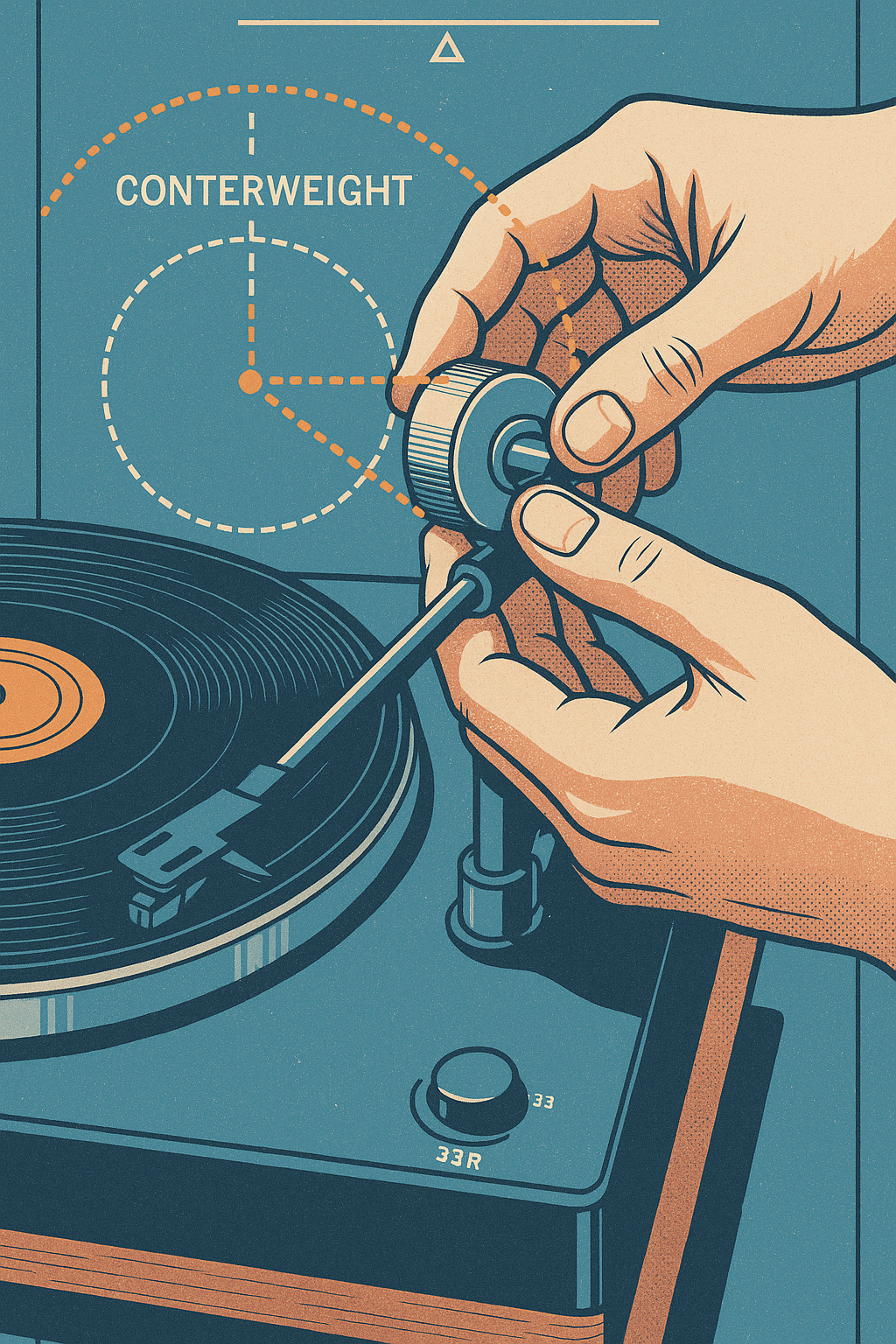Unraveling the Terminology, History, and Modern Meanings in Our Comprehensive Deep Dive into Your Analog Audio Gear
So, you're diving into the wonderful world of vinyl. Awesome! But maybe you've hit a snag with the lingo. Is it a "record player," a "vinyl player," or a "turntable"? You hear these terms tossed around, sometimes all for the same gadget, and it's enough to make your head spin faster than a 45!

Don't sweat it. You're not alone in this confusion. The terminology around these beloved sound machines has a rich history, and like a classic track, it's got a few layers. This post is gonna break it all down for you, American-style, so you'll know exactly what's what. We'll journey from the earliest sound machines to the sleek setups of today, figuring out how we got all these names and what they really mean.
From Tin Foil to Groovy Discs: A Quick History Lesson
Way back when, before streaming or even CDs, inventors were figuring out how to capture and play back sound.
-
The Early Days: Think Thomas Edison and his Phonograph (1877), which used cylinders. Then came Emile Berliner with the Gramophone (1887), a game-changer because it used flat discs – the great-grandpappy of the records we use today. These early discs were often made of hard rubber or other experimental materials.
-
Enter "Record Player" and Shellac: As disc records took over, people needed a name for the machines that played them. Around 1913, the term "record player" started popping up. It was a straightforward name for a device that, well, played records. For a long time, these records were "78s" – spinning at 78 revolutions per minute and made of a brittle material called shellac mixed with fillers like clay or slate. These old-school record players were built for these tougher, coarser-grooved discs, often featuring heavy arms and steel needles.

The Vinyl Revolution: Smoother Sounds, New Names
The mid-20th century brought a massive shift: vinyl. Polyvinyl chloride (PVC), or vinyl, was a game-changer.
-
Why Vinyl Rocked: It was way more durable than shellac and could produce much better sound quality. Plus, you could make "microgrooves" – much finer grooves that allowed for longer playing times. This led to the LP (Long Play) record at 33⅓ rpm (introduced by Columbia Records in 1948) and the 45 rpm single (from RCA Victor in 1949). Suddenly, music wasn't just a 3-minute affair per side.
-
Players Had to Evolve: Playing these delicate vinyl microgrooves without wrecking them required new tech: lighter tonearms, finer styli (often diamond or sapphire), and more stable motors. This quest for better sound was the birth of high-fidelity (hi-fi) audio.
This is where the terminology starts to get a bit more specific. While "record player" was still a perfectly good general term, the rise of hi-fi and component-based systems brought another term to the forefront.
Here's a quick look at how things evolved:
Table 1: The Spin Through History
| Era | Common Device Names | Key Features | Main Record Type |
|
Late 19th Century |
Phonograph, Graphophone |
Cylinder-based, acoustic sound |
Wax/metallic cylinders |
|
Late 19th - Early 20th C |
Gramophone |
Flat discs, acoustic sound, spring motors |
Hard rubber, early shellac discs |
|
Early - Mid 20th C |
Gramophone, Record Player |
Electric motors, later electronic amps, shellac-ready gear |
Shellac 78 rpm discs |
|
Mid - Late 20th C |
Record Player, Turntable |
Vinyl/microgroove optimized, hi-fi components, all-in-one systems |
Vinyl LP (33⅓ rpm), Vinyl Single (45 rpm) |
|
Late 20th C - Today |
Turntable, Record Player, Vinyl Player |
Digital features (USB, Bluetooth), hi-fi continues, budget all-in-ones |
New & reissued Vinyl LPs/45s |
Defining Your Deck: Record Player vs. Turntable vs. Vinyl Player
Okay, let's get to the heart of it. What do these terms mean today?
"Record Player": The Jack-of-All-Trades Term
"Record player" is a bit of a chameleon.
-
The Old-School Meaning: Historically, it meant any device that played disc records. Simple.
-
The Modern All-in-One: Nowadays, if you walk into a big-box store or browse online for a "record player," you're most likely gonna see an all-in-one unit. This means the turntable part (platter, tonearm, cartridge), the amplifier, and the speakers are all built into one convenient package. Think those popular suitcase-style players. They're generally aimed at casual listeners or beginners who want something easy, portable, and often more affordable. Plug it in, and you're good to go.

The catch? Because these all-in-one systems often prioritize convenience and cost over top-tier audio quality, some audio enthusiasts look down their noses a bit when they hear "record player" used for everything.
xj-home-all-in-one-vinyl-record-player-yellow-walnut-wood
"Turntable": The Hi-Fi Heartthrob
For serious audio folks (audiophiles) and dedicated collectors, "turntable" is usually the preferred term for a specific kind of gear.
-
The Core Component: A "turntable" in this sense is a standalone component. It includes the platter that spins the record, the motor, the tonearm that holds the cartridge, and the cartridge itself (which has the stylus, or needle, that reads the grooves).
-
Needs Backup: Crucially, a turntable requires an external amplifier (or a receiver with a phono input) and external speakers to actually make sound you can hear. Some turntables have a built-in phono preamplifier (often called a phono stage), but you'll still need a separate power amp and speakers.
-
Quality Quest: Turntables are all about sound quality. They're built with precision parts to ensure stable speed, accurate tracking, and minimal interference from vibrations or noise. You can often upgrade parts like the cartridge or stylus to fine-tune your sound. This is the route you take if you're chasing the best possible analog audio experience.
Interestingly, an all-in-one record player contains a turntable mechanism. But an audiophile wouldn't typically call their high-end, standalone turntable a "record player."
"Vinyl Player": The New Kid on the Block
"Vinyl player" is a term that's really taken off with the recent vinyl boom.
-
What it Sounds Like: It's pretty intuitive, right? A machine that plays vinyl. Newcomers to the hobby often use it, and you'll see it in online stores a lot. It makes sense – we have "CD players" and "MP3 players," so why not "vinyl player"?
-
Catch-All or Specific? Sometimes it's used interchangeably with "record player" (especially for the all-in-one types). Other times, it might be used to specifically mean a device for vinyl records, as opposed to old shellac 78s.
-
Purist Pet Peeve? Some long-time audiophiles aren't fans of "vinyl player," seeing it as imprecise or just... not the traditional term. One expert even joked it's a way to "grind the gears of an audiophile."
The rise of "vinyl player" shows how language evolves with new generations embracing old tech. It's not necessarily "wrong," but it doesn't always have the specific meaning that "turntable" does in hi-fi circles.
Table 2: Modern Gear at a Glance
| Term | Typical Setup | Built-in Speakers? | Built-in Amp? (Power) | Needs External Amp/Speakers? | Main Crowd | Vibe |
|
Record Player |
All-in-one (turntable, amp, speakers in one box) |
Usually Yes |
Usually Yes |
Usually No |
Casual listeners, newbies |
Easy, portable, often budget-friendly |
|
Turntable |
Standalone component (platter, tonearm, cartridge) |
No |
Rarely (phono pre only) |
Yes |
Audiophiles, serious collectors |
Top sound quality, customizable, serious gear |
|
Vinyl Player |
Varies; often all-in-ones, sometimes turntables |
Often Yes |
Often Yes |
Often No |
General public, new fans |
Modern term, plays vinyl, can be a bit vague |
Who Says What, and Why Should You Care?
-
Newbies & Casual Fans: Often use the terms interchangeably or go for "vinyl player." They might also say "vinyls" when they mean "vinyl records" (the plural of vinyl is just vinyl, FYI!). It's all good – the point is enjoying the music.
-
Audiophiles & Hardcore Collectors: They stick to "turntable" for their high-quality gear and might cringe a little at "vinyl player" or if you call a cheap all-in-one a "turntable." For them, precise language reflects a deeper understanding of the tech.
-
Stores & Makers: They're smart. They'll use "record player" for entry-level all-in-ones and "turntable" for the fancier stuff. You'll also see "vinyl player" more and more in product titles and categories online to catch how people are searching. An Amazon title might even say "Vinyl Record Player Wireless Turntable" to cover all bases!
So, What's the Bottom Line?
When you're shopping or talking about your gear:
-
"Record Player" is fine as a general term, but many people will assume you mean an all-in-one system with built-in speakers.
-
"Turntable" usually means a separate component that needs an amp and speakers, generally aiming for better sound.
-
"Vinyl Player" is a newer, popular term that most people use to mean any device that plays vinyl, often the all-in-one kind.
The most important thing? Look at the actual features, not just the name on the box. Does it have built-in speakers? Does it need to be hooked up to a separate stereo system? What's the quality of the tonearm and cartridge like? These details will tell you more than the label.
No matter what you call it, the magic of dropping a needle on a spinning disc and hearing that warm, analog sound is something special. So, pick your player, grab your favorite records, and enjoy the groove!







Leave a comment
All comments are moderated before being published.
This site is protected by hCaptcha and the hCaptcha Privacy Policy and Terms of Service apply.